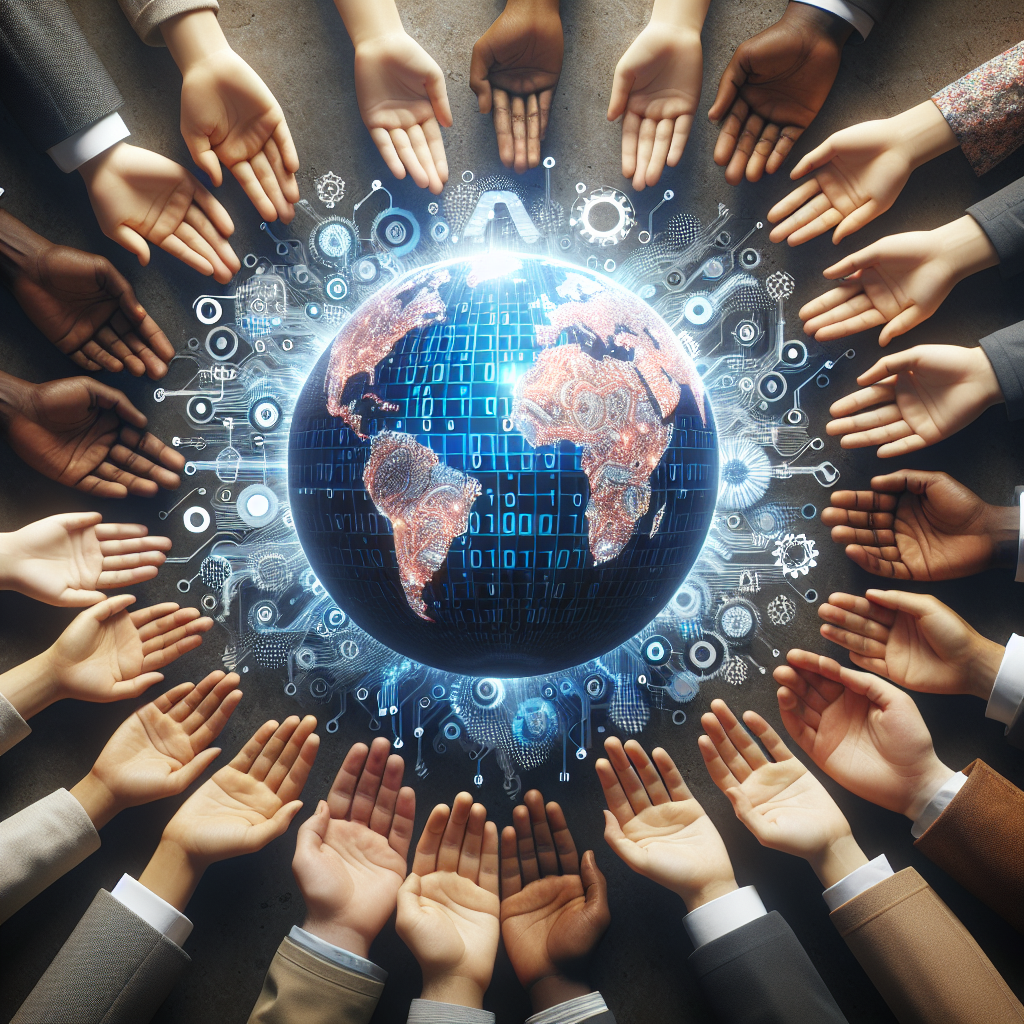Inclusive AI: Bridging the Digital Divide for Global Good
In an era where technology shapes our everyday lives, Artificial Intelligence (AI) stands out as a revolutionary force. From healthcare to education, finance, and beyond, AI systems are redefining the boundaries of what’s possible, promising a future fueled by intelligent solutions tailored to human needs. However, this bright future risks being tarnished by the shadow of the digital divide, a gap that separates those who have access to digital technologies and those who do not. Inclusive AI emerges as a beacon of hope, aiming to bridge this divide and ensure the benefits of AI are shared globally, fostering a world where technology serves everyone, not just a privileged few.
The Essence of Inclusive AI
Inclusive AI is about designing, developing, and deploying artificial intelligence systems with an emphasis on accessibility, fairness, and equity. It’s an approach that seeks to involve diverse perspectives in AI development, ensuring that these systems understand and serve the needs of a wide array of users, including those traditionally marginalized or underserved by technology.
The Importance of Bridging the Digital Divide
The digital divide represents a significant barrier to global progress. On one side, individuals in technology-rich environments gain unprecedented access to information, opportunities for education, and economic growth. On the other, those in less connected regions face significant hurdles in reaching their potential, perpetuating cycles of poverty and inequality. Bridging this divide through inclusive AI can lead to a more equitable world where everyone has the opportunity to benefit from technological advances.
Strategies for Fostering Inclusive AI
1. Diverse Data Sets: Ensuring AI systems are trained on diverse data sets that accurately represent the global population. This helps in reducing biases and making AI solutions more applicable across different demographic groups.
2. Community Engagement: Involving communities in the AI development process, especially those that are underrepresented. This not only ensures that the technology addresses their needs but also empowers them by giving them a stake in the development of future technologies.
3. Accessibility Features: Designing AI systems with built-in accessibility features to accommodate users with disabilities. This includes voice recognition for those unable to use a keyboard or screen readers for the visually impaired.
4. Education and Awareness: Enhancing digital literacy globally to ensure individuals can interact with AI systems effectively. Education initiatives should focus not only on how to use these systems but also on understanding their impact on society.
5. Ethical Considerations and Policies: Establishing ethical guidelines and policies that govern AI development and deployment. These should prioritize human rights and ensure that AI systems do not perpetuate or exacerbate existing inequalities.
The Impact of Inclusive AI
The potential impact of inclusive AI is profound. In healthcare, it could enable remote diagnostics and treatment options, reaching underserved populations in remote areas. In education, personalized AI tutors could provide individualized learning experiences, accommodating different learning styles and needs. Furthermore, inclusive AI can drive economic empowerment by enabling new job opportunities and enhancing workforce skills in a digitized economy.
Real-world Examples of Inclusive AI in Action
– AI for Accessibility: Microsoft’s AI for Accessibility program is an example of how technology companies are leveraging AI to empower people with disabilities. The program funds and develops AI solutions that help people with disabilities by improving their access to technology and increasing their employment opportunities.
– AI for Earth: This initiative applies AI technology to tackle environmental challenges. By analyzing vast amounts of environmental data, AI models can help in predicting climate patterns, monitoring endangered species, and optimizing crop yields, demonstrating how inclusive AI can benefit not just humans but the planet as a whole.
The Road Ahead
The journey towards truly inclusive AI is ongoing. It requires the collective effort of governments, tech companies, civil society, and individuals. By prioritizing inclusivity, we can ensure that AI serves as a tool for global good, bridging the digital divide and creating a future where technology’s benefits are universally shared.
FAQs
Q1: What is the digital divide?
The digital divide refers to the gap between individuals who have access to modern information and communication technology, and those who do not, often due to factors like socioeconomic status, geographical location, age, and education.
Q2: How can AI exacerbate the digital divide?
If not carefully managed, AI can widen the digital divide by primarily benefiting those with better access to digital technologies, further marginalizing underrepresented communities.
Q3: Can AI be biased?
Yes, AI systems can exhibit biases if they’re trained on non-representative data sets or designed without considering diverse user needs. This is a significant concern in creating inclusive AI systems.
Q4: What does inclusive AI mean for businesses?
For businesses, inclusive AI represents an opportunity to tap into new markets by creating products and services that cater to a wider, more diverse audience. It also encourages innovation and drives social responsibility initiatives.
Q5: How can I contribute to the development of inclusive AI?
Individual contributions can include advocating for inclusive practices in technology, supporting policies that promote digital inclusivity, engaging in or supporting education initiatives that aim to enhance digital literacy, and participating in or supporting projects that aim to make technology more accessible to underserved communities.
By embracing the principles of inclusive AI, society can work towards bridging the digital divide, ensuring that the future of technology is one where everyone has the opportunity to benefit, thrive, and contribute.

